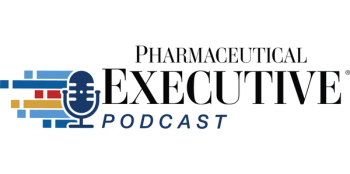Trump Pauses Plans to Impose 100% Tariffs on Pharma: Report
Key Takeaways
- President Trump is using the threat of 100% tariffs on pharma imports as a negotiation tactic to lower drug prices.
- Pfizer has secured a three-year tariff exemption by agreeing to reduce drug prices in line with the President's MFN executive order.
This marks the latest change in the President’s strategy.
Another week, another change to the pharma tariffs policy.
A new report states that President Trump is backing off from his threat to impose 100% tariffs on branded and patented pharma imports.1 This is just the latest change in course for the administration, who have made tariffs and pharmaceutical pricing two of its top priorities this term. Since being inaugurated in January of this year, President Trump has threatened widespread tariffs on all imports, including pharma products, multiple times, only to change course or alter the timeline later on.
Most recently,
Earlier this week,
Pfizer did not reveal the details of its agreement with the government to the public.
Now, according to a report from Politico, the President may not impose the 100% pharma tariffs. Instead, he hopes to use the tariffs as a negotiating tactic with pharma companies as they attempt to work out deals with the government to lower drug costs.
Prior to the October 1st deadline, Commerce Secretary Howard Lutnick suggested that the tariffs would be held off during the negotiations. As the calendar turned to October, no tariffs were officially implemented.
Simon Schropp, director at global consulting firm BRG, told Poltico, “It was an opening salvo that, personally, I think, failed the target by a country mile, just because it’s so over the top. But it is a playbook of outrageous demands and then settle for a headline grabbing deal and then the rest kind of fizzles out. It wouldn’t be the first time that we’ve seen that.”
Another detail that may be at play is the government’s plans to launch TrumpRx, a government-run website that would sell pharmaceutical drugs directly to customers at discounted rates. Pfizer, as part of its agreement with the administration, announced its intention to participate on the website. As the government negotiates with other pharma companies about participation with the program and what discounts are offered, it’s likely that tariffs will be used as leverage.
President Trump has made reducing pharmaceutical prices a priority for his administration, but he’s taken multiple approaches to do so. Initially, the threat of tariffs was put in place in order to push pharmaceutical companies to rely less on imports and to invest in new domestic manufacturing sites. Separately, the
The industry is also awaiting the results of a report from the Commerce Department on the impact of pharmaceutical imports on national security. The report was initially launched on April 1 and was due 270 after that. The results of that report would theoretically have an impact on the President’s ability to impose tariffs.
Source
- Trump delaying triple-digit pharma tariffs to negotiate drug price deals. Politico. October 1, 2025.
https://www.politico.com/news/2025/10/01/trump-delays-triple-digit-pharma-tariffs-to-negotiate-drug-price-deals-00590051?stream=top&utm_campaign=newsletter_axiosvitals&utm_medium=email&utm_source=newsletter
Newsletter
Lead with insight with the Pharmaceutical Executive newsletter, featuring strategic analysis, leadership trends, and market intelligence for biopharma decision-makers.





